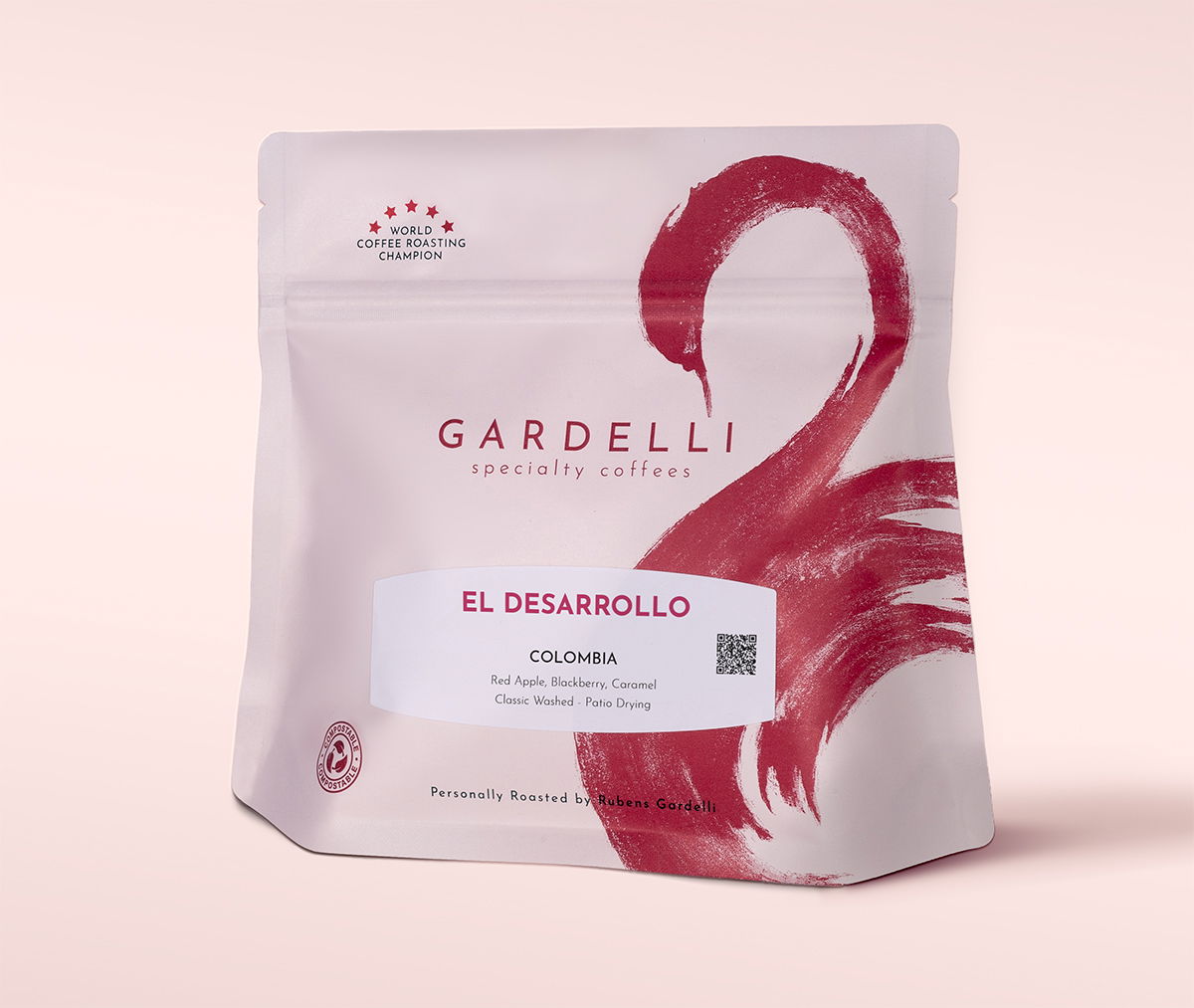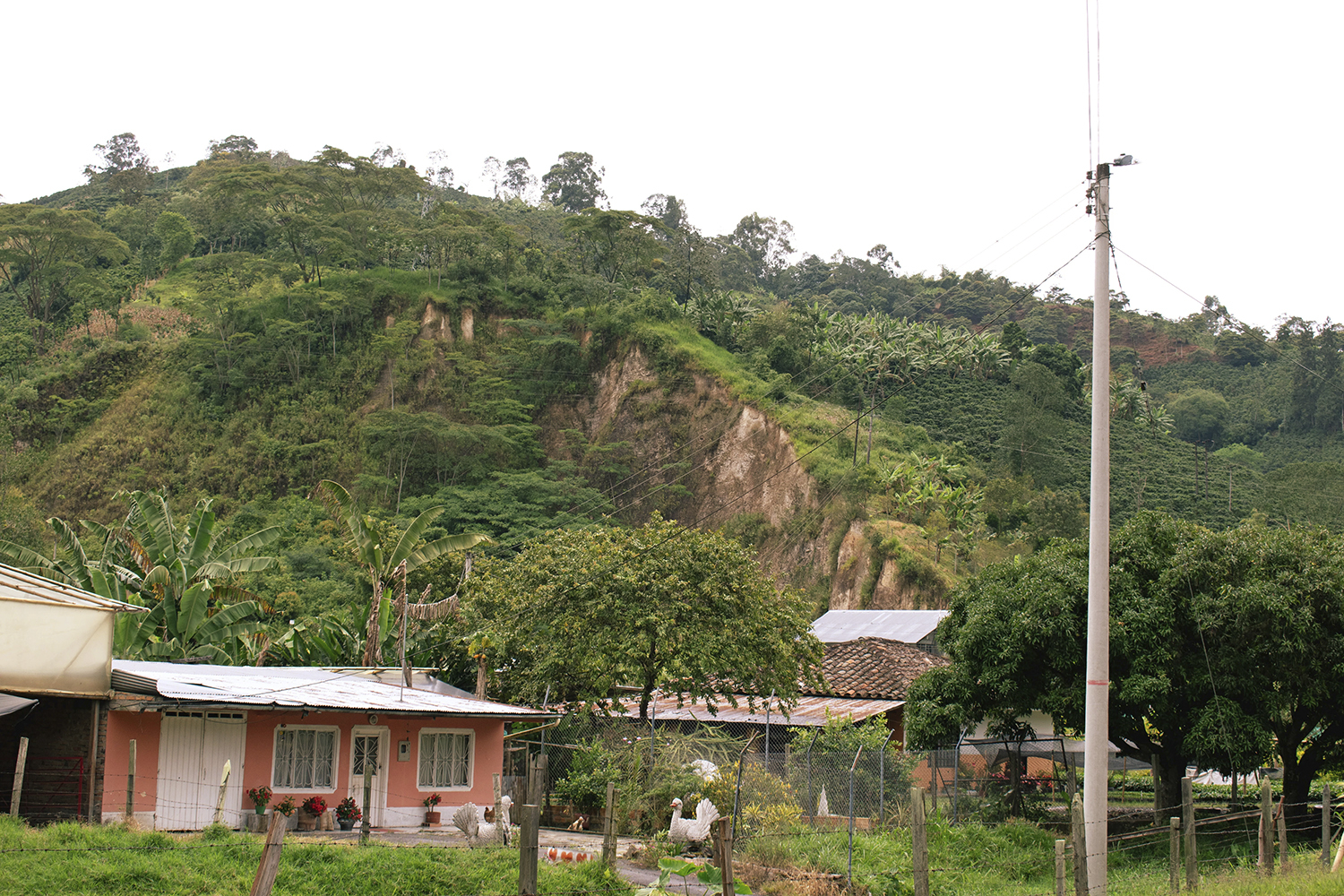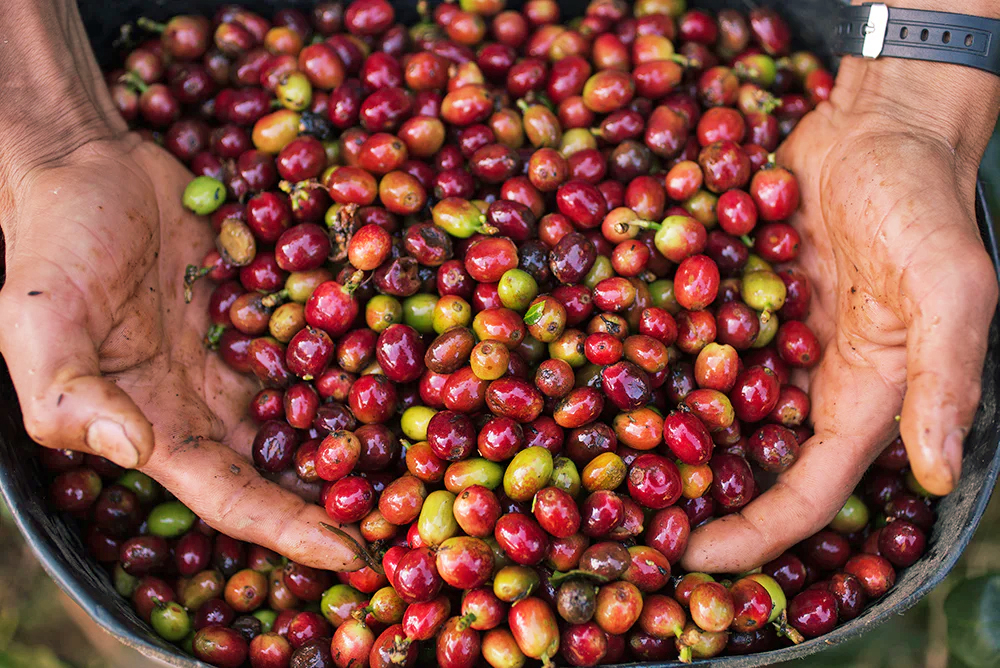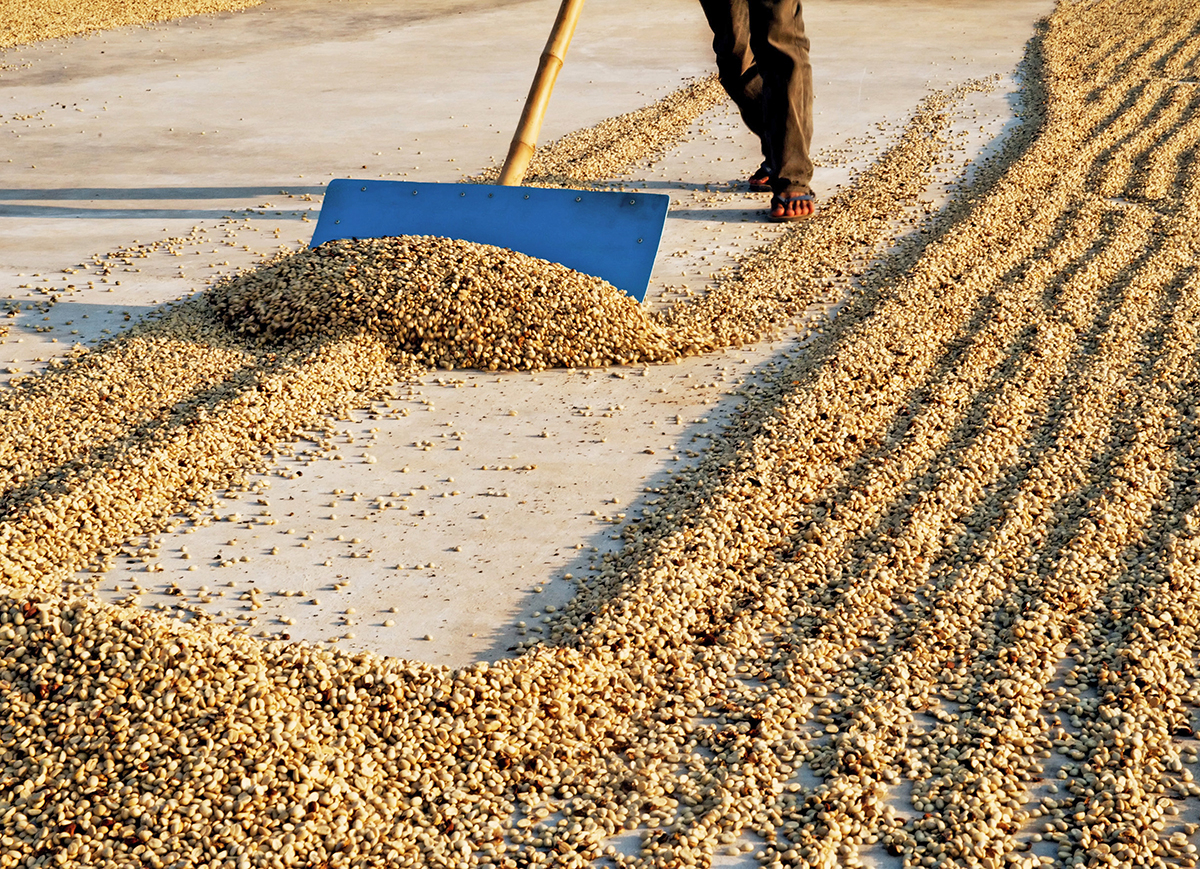








Colombia
Cup Notes: Red Apple, Blackberry, Caramel
This Caturra and Colombia lot delivers an intense body and sweetness, with notes of caramel complemented by a refreshing apple and blackberry acidity, resulting in a juicy and well-balanced coffee.
Suggested for espresso and filter
when we roast
We freshly roast to order all coffees on Monday, Wednesday and Friday (excluding national holidays), and ship the same day! Cut-off time is 11:59pm (UTC+1) of the day before the roast day. *We only ship whole beans*
The municipality of Gigante, located in the center-east of Huila department, is a picturesque region, nestled between the majestic West Andes and the Matambo Hill, alongside the flowing waters of the Magdalena River. Blessed with abundant natural beauty, Gigante boasts lush forests, meandering rivers, and vibrant streams, though, in the recent years, it has been facing challenges due to climate change and unsustainable land practices.
One of the area's treasures is the El Desarollo Association, a collective of over 220 small and medium-sized coffee growers situated on the western slopes of the Eastern Andes. Spanning 41 villages, this association comprises 169 men and 51 women, whose ages range from 25 to 78 years old. These resilient families derive their livelihoods primarily from coffee farming, supplemented by cultivating small crops for both sustenance and sale. The predominant coffee varietals cultivated on their volcanic soils are Caturra and Colombia, which both thrive in an environment blessed with an abundant annual rainfall at the altitude ranging from 1200 to 1500 masl.
Gigante's economy is primarily agricultural, and coffee production is its cornerstone. Historically known as the cocoa capital of Huila, the municipality saw a shift after the construction of the Quimbo hydroelectric dam submerged extensive cocoa plantations, diminishing cocoa's economic significance. Today, Gigante's population of approximately 33,000 inhabitants continues to embrace agriculture, particularly coffee cultivation, as a vital source of income, albeit facing economic challenges where agricultural earnings often fall below minimum wage standards.

CATURRA
Coffee Arabica Caturra is one of the most famous coffee varieties in the world and one of those most cultivated in Colombia. According to the experts, the variety combines high yields and a good cup quality. The Caturra variety comes from the Bourbon family and the Bourbon-Tìpica Group, with a single gene mutation that causes the plant to grow smaller.
COLOMBIA
Using Catimor’s HdT x Caturra recipe as a blueprint, Cenicafé first created the Colombia variety as an F5 composite, and released it in 1982.

Coffee is harvested during the main crop season from April to June.
It undergoes a traditional washed process, where it is pulped, fermented, and then washed before being dried on small patios.
